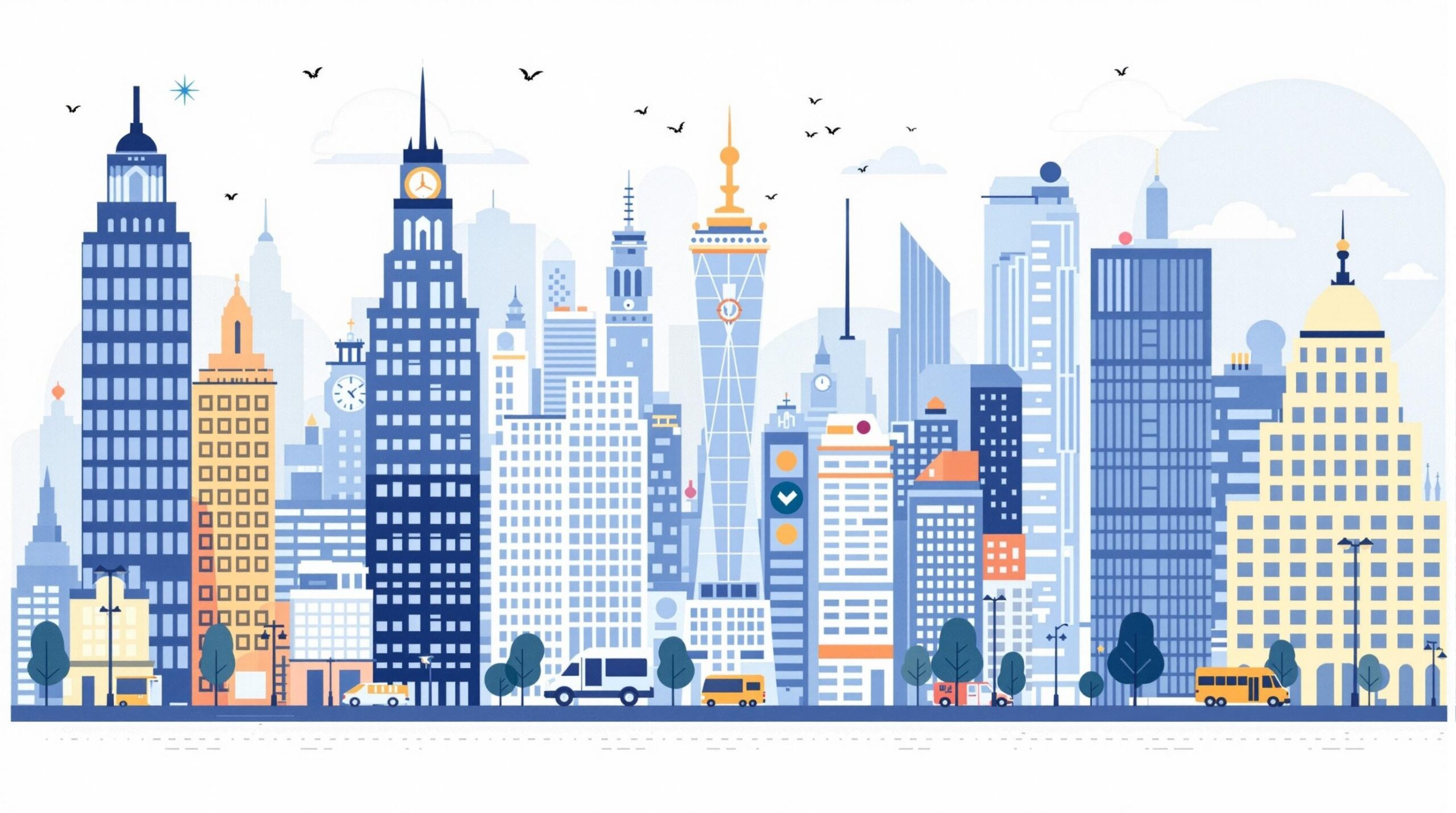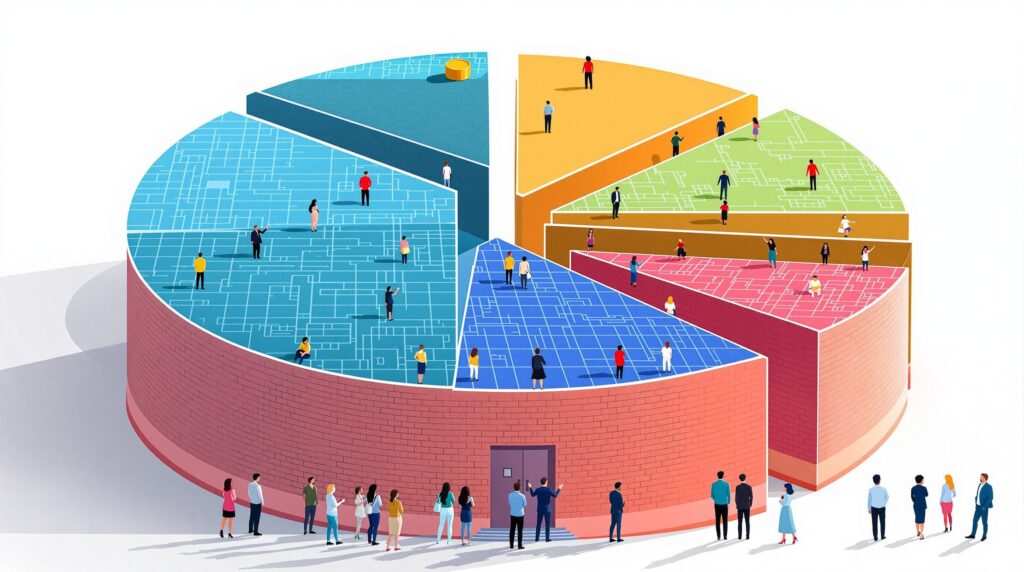[rev_slider alias=”slider-1″][/rev_slider]
Understanding Layer 1 and Layer 2 Blockchains
Layer 1 blockchains, often referred to as the foundation of the crypto world, include prominent networks such as Bitcoin and Ethereum. These are the underlying structures that enable decentralized operations, providing the essential security and decentralization needed for blockchain technology. They operate independently, processing transactions on their own chain and ensuring reliability and trustworthiness for users. However, with increasing user adoption, these networks face significant challenges, especially in terms of scalability.
Scalability is a critical issue as it refers to a blockchain’s ability to handle a growing amount of work, or its potential to accommodate growth. This is where Layer 2 solutions come into play. But what exactly is a Layer 2 blockchain? A Layer 2 blockchain is an overlaying network that lies on top of Layer 1 blockchains. It’s specifically designed to alleviate the load on the Layer 1 network, thereby enhancing scalability and throughput.
What is a Layer 2 blockchain? A Layer 2 blockchain is a secondary framework built on top of an existing blockchain network primarily to improve scalability and transaction speed. By offloading some tasks to this layer, it helps reduce congestion on the main chain.
By utilizing Layer 2 solutions, networks can achieve greater efficiency in processing transactions. They effectively increase the transaction speed and reduce costs, which are crucial elements for broader adoption and usability. Consider the analogy of a busy highway; a Layer 1 blockchain is like the main road where all the traffic flows, while Layer 2 solutions add additional lanes that allow for faster and more efficient travel.
In the context of Africa’s burgeoning digital economy, these technologies are especially crucial. Jara, with its focus on leveraging modern blockchain technology, stands at the forefront of this transformation. The $JARA token plays a significant role in the ecosystem by offering solutions that include a proprietary Layer 2 blockchain. This approach not only addresses scalability concerns but also provides other benefits such as lower transaction costs and enhanced security measures.
To sum up the importance of both layers in blockchains, it’s evident that for any blockchain ecosystem to thrive, like the one envisioned by Jara’s initiatives in Africa, leveraging both Layer 1 and Layer 2 blockchains is essential. They complement each other, with Layer 2 acting as a supplementary system that boosts the overall efficiency of the foundational Layer 1.
Key Differences: Layer 1 vs. Layer 2 Solutions
Understanding the distinction between Layer 1 and Layer 2 blockchain solutions can be compared to differentiating between upgrading an engine and adding a turbocharger to a car. Layer 1 solutions enhance the fundamental blockchain protocol itself, much like improving the core engine for more power and efficiency. This involves modifications at the most basic level to increase throughput, enhance security, and ensure the decentralization of the network.
In contrast, Layer 2 solutions are akin to adding a turbocharger—they sit on top of the existing blockchain to boost its performance. By utilizing off-chain methods, Layer 2 solutions expand capability without altering the foundational structure. This is particularly beneficial for addressing scalability issues, enabling faster transactions at lower costs.
Why use Layer 1 and Layer 2 together? Combining these solutions allows blockchain networks to handle a larger volume of transactions and deliver enhanced speed, creating a more efficient and user-friendly system.
One might wonder, do these enhancements affect how people interact with blockchains, especially in regions like Africa? Indeed, they do. With Africa’s burgeoning digital economy and growing interest in cryptocurrencies, efficient blockchain scalability is crucial. By providing lower transaction costs and faster processing times, Layer 2 solutions can significantly aid in financial inclusion and economic empowerment across the continent.
Technical Aspects of Layer 1
Layer 1 blockchains focus on protocol improvement. Key advancements in these solutions include enhancing consensus mechanisms (like moving from Proof of Work to Proof of Stake), optimizing transaction processing, and expanding network size. For instance, Ethereum’s transition to 2.0 illustrates an important Layer 1 improvement aimed at sustaining large-scale use.
- Consensus Mechanisms: These involve methods like Proof of Work (PoW) and Proof of Stake (PoS), determining how transactions are validated.
- Transaction Handling: Adjustments made to efficiently manage and verify countless transactions across the network.
- Network Capacity: Strategies to increase the decentralization and security by expanding the network’s size.
Benefits of Layer 2 Enhancements
Layer 2 solutions offer a variety of benefits beyond mere transaction processing. They incorporate sophisticated technology into blockchain networks:
- Increased Throughput: Achieved by handling a significant number of off-chain transactions.
- Cost Reduction: Minimized fees associated with processing transactions enhance accessibility and usability.
- User Experience Improvement: Deliver enhanced speed and efficiency, crucial for wide adoption in emerging markets.
How do Layer 2 solutions support Africa’s digital transformation? They provide scalable and cost-effective solutions that enable greater access to digital financial services by reducing technological barriers.
In conclusion, both Layer 1 and Layer 2 solutions are essential for a robust blockchain ecosystem. Their combined capabilities offer scalable solutions that not only enhance the performance of blockchain networks globally but are also aligned with the unique demands of Africa’s digital asset economy.
[rev_slider alias=”text-call-cta”][/rev_slider]
Benefits of Integrating Layer 1 and Layer 2 Technologies
Scalability and Efficiency
Integrating Layer 1 and Layer 2 technologies can significantly boost blockchain scalability. This combination allows for more efficient processing of a higher volume of transactions while keeping costs low, providing a better user experience.
Scalability has always been a concern within the blockchain realm, especially as the technology grows beyond its initial confines. By layering these two technologies, we can optimize the system’s throughput. But what exactly does this entail?
What is scalability in blockchain? Scalability refers to a blockchain’s ability to handle a growing amount of work, or its potential to be enlarged to accommodate that growth.
Layer 1, often described as the foundation or the main building block of blockchain, includes the base protocols like Bitcoin and Ethereum. These protocols are inherently limited by the number of transactions they can process per second, which often leads to increased transaction times and costs during peak periods. This is where Layer 2 comes in as a game-changer.
Layer 2 Solutions: Layer 2 solutions, such as the Ethereum-based Caldera platform utilized by Jara, build on the existing layer 1 by managing transactions off-chain, reducing the load on layer 1, and processing them efficiently. This not only reduces transaction congestion but also diminishes transaction costs.
- Key Benefit: Enhanced transaction throughput without additional strain on Layer 1.
- Cost Efficiency: Lower transaction fees thanks to off-chain processing.
- Improved User Experience: Faster and smoother transactions encourage more user interaction and participation in the ecosystem.
Furthermore, Jara’s proprietary Layer 2 blockchain has been fine-tuned for African markets, maximizing efficiency specifically in the context of tokenized real-world assets. As Africa undergoes a digital transformation, Jara harnesses these innovations to bridge traditional financial systems with blockchain technologies.
Integrating Layer 1 and Layer 2 is pivotal for scaling blockchain systems, ensuring low-cost, high-speed transactions that are vital for expanding digital economies.
In fact, consider your daily commute to work as an analogy. Layer 1 functions like the major highways that are sometimes clogged due to high traffic. Layer 2, in contrast, is akin to the express lanes you pay a little extra for, but these lanes ensure a quicker, more consistent free-flowing trip.
Indeed, criminal law systems have their own sets of complexities and scales, much like blockchain networks. Just as these legal systems evolve with new policies and dimension expansions, the same applies to blockchain protocols progressing through layer integrations.
Driving Digital Inclusion and Economic Growth
This integration is more than just about technology; it’s a crucial step towards financial inclusion and economic empowerment, especially in regions such as Africa. By facilitating a more efficient system, Jara is helping to fill the infrastructure gap that has hindered economic growth in these regions for years.
The synergy between Layer 1 and Layer 2 technologies is vital for advancing digital economies, particularly in emerging markets like Africa, where there is a huge potential for growth and development.
For businesses and individuals alike, this opens up access to previously unavailable financial tools, inviting greater global investment and interaction. Jara is at the forefront of this movement, with its Layer 2 blockchain standing as a beacon of innovation and hope for the digital future of Africa.
Future Prospects and the Need for Both Layers
Blockchain technology is rapidly transforming how we think about digital assets and transactions. As we look toward the future, it’s clear that both Layer 1 and Layer 2 solutions will play critical roles in this technological revolution. But why are both needed, and how do they complement each other?
What is a Layer 1 blockchain? A Layer 1 blockchain refers to the base level of the blockchain architecture, such as Bitcoin or Ethereum, that provides the fundamental framework for recording transactions directly on its main ledger.
Layer 1 blockchains are the backbone of the blockchain ecosystem. They provide the essential infrastructure for decentralized finance and other applications. However, as demand has increased, so has the need for scalability. That’s where Layer 2 solutions come in.
What is a Layer 2 solution? A Layer 2 solution is built on top of a Layer 1 blockchain, providing enhancements like increased speed and lower transaction fees by processing transactions off the main chain.
Layer 2 solutions offer a scalable and efficient alternative to traditional blockchain transactions. By processing transactions off-chain, these solutions help reduce congestion and improve user experience on Layer 1 blockchains. This synergy is vital for the continued growth and adoption of blockchain technologies.
In Africa, the potential for blockchain to revolutionize financial services is immense. With a current infrastructure gap and a growing demand for accessible financial tools, integrating both layers could solve many existing challenges. Organizations like Jara are pioneering this movement, offering a comprehensive ecosystem that combines a Layer 2 blockchain with practical applications tailored for the African market.
- Increased Scalability: By utilizing Layer 2 solutions, blockchain systems can handle a higher throughput, crucial for large-scale applications like those envisaged in African markets.
- Cost Efficiency: Layer 2 reduces transaction fees, making blockchain technology more accessible to broader user bases, particularly in cost-sensitive regions.
- Security and Decentralization: While Layer 2 assists with efficiency, Layer 1’s role in maintaining security and decentralization remains indispensable.
“Your Voice, Our Mission” – At Jara, we are weaving the future of digital finance in Africa, ensuring everyone can access and benefit from the advanced capabilities of blockchain technology.
As Layer 1 and Layer 2 solutions continue to evolve, they will undoubtedly bring about more sophisticated mechanisms for managing digital assets. For investors and users alike, understanding the distinct yet complementary roles of these layers is crucial for navigating the burgeoning world of digital finance. With leaders like Jara paving the way, the future looks promising for both technological advancement and socio-economic development in Africa.
By investing in platforms like Jara, stakeholders can gain exposure to a robust digital asset economy. This blend of Layer 1 security and Layer 2 efficiency creates a compelling value proposition for users across the continent and beyond.
Want to explore more about how blockchain is reshaping financial landscapes? Check out how blockchain is defended in legal systems.
This HTML content outlines the future prospects of Layer 1 and Layer 2 blockchain solutions, emphasizing the necessity of both for scalable and efficient blockchain ecosystems. The content uses structured HTML elements, callouts for key definitions, and incorporates contextual links, maintaining compatibility with WordPress via Zapier integration.
[rev_slider alias=”schedule-consultation-btn”][/rev_slider]

What is a Layer 1 blockchain?
A Layer 1 blockchain is the base network on which various blockchain solutions are built. It provides the primary framework for decentralized and secure transactions, such as those seen in Bitcoin and Ethereum.
Why is Layer 2 important for blockchain technology?
Layer 2 solutions are crucial because they enhance the scalability of blockchain technology. By operating atop Layer 1, Layer 2 solutions enable faster transaction processing and lower fees, which are essential for wider adoption.
Can Layer 2 solutions operate independently of Layer 1 blockchains?
No, Layer 2 solutions cannot operate independently. They are designed to work in conjunction with Layer 1 blockchains, relying on the security and consensus mechanisms provided by the foundational network.
How does Jara utilize Layer 2 technology?
Jara leverages proprietary Layer 2 technology to facilitate low-cost, high-speed transactions within its ecosystem. This innovation underpins Jara’s initiatives, such as the tokenization of real-world assets, fostering financial inclusion in Africa’s digital economy.

Related Pages on Blockchain Solutions
Explore additional pages related to blockchain solutions that might be of interest to you:
Hear From Our Satisfied Clients in Africa
At the forefront of our Layer 1 and Layer 2 blockchain solutions practice is a deep-seated commitment to client satisfaction. Each case is handled with utmost care, as echoed in the appreciative feedback from those we represent.

[rev_slider alias=”slider-3″][/rev_slider]
[rev_slider alias=”slider-6″][/rev_slider]
Connect with Blockchain Experts
Are you navigating the complex world of Layer 1 and Layer 2 blockchain technologies? Let Jara be your guide. With our expert team, we help you integrate the most efficient blockchain solutions tailored for your needs. Reach out today and witness firsthand how we bridge global capital to African assets, transforming your visions into reality.
Your Voice, Our Mission – we champion your blockchain goals with the tenacity and dedication that has earned us the trust of our community members.
Discover how Jara can bring unparalleled efficiency and innovation to your blockchain strategies. Learn more about our services or download the Jara app on Android and iPhone to start your journey with us today!
Chinyere “Chi” Nnadi Bio
Founder and CEO, Jara | Blockchain Technology Specialist
Content reviewed by Chi Nnadi and his content team. Chi is an experienced entrepreneur dedicated to transforming Africa’s financial ecosystem through blockchain technology. As the Founder and CEO of Jara, he builds enterprise-grade infrastructure converting illiquid African assets into globally accessible digital tokens. Chi bridges the gap between global investors and Africa’s growing digital asset market with his proprietary Layer-2 blockchain technology.
Our Content Review Process
Chi Nnadi along with Jara’s dedicated content team, pledge to offer top-notch material. Our content guidelines ensure thoroughness, reputable sources, unbiased scrutiny, among other quality metrics. Please let us know if there is anything you believe to be inaccurate.
















